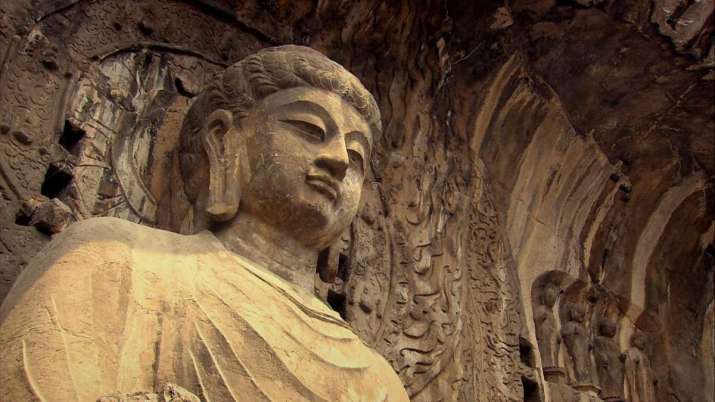
Having analyzed the fo-xi phenomenon (click here for Part One), Prof. Xuan Fang discusses how shifting religious policies and “sinicization” is shaping the development of Buddhism. In addition, the rise of anti-Humanistic Buddhist ideas and digitization will inevitably affect the future expression of Buddhism and the foci and mode of its preaching. Such trends demand close attention.
Both segments of this article were translated with permission from their original entries in issues 429 (May 2019) and 430 (June 2019) of Humanity Magazine (人生雜誌), which is published by Dharma Drum Mountain.
Q4: How does the tightening of religious policy affect education in Buddhist seminaries?
XF: In fact, the seminaries aren’t too affected by current policy, because the government places a good deal of importance on the development of religious institutes. This is seen from the fact that the Religious Affairs Management Regulations, amended in 2018, devoted a separate chapter on religious institutes. Managing religions demands the loyalty and alliegiance of prominent figures in the religious sector, and the majority of such figures come from religious institutes. This has been the experience of the ruling party in the religious field. As a result, the government pays particular attention to the management of religious institutes, demanding love for country as well as faith, and emphasizing political education. At the same time, there is not a great deal of intervention in the religious curriculum.
Notably, the government demands “sinicization” of religious teachings. Many overseas Buddhists and Daoists find it hard to comprehend why the Chinese government would want to stake political capital and credibility on interpreting religious teachings. Furthermore, the term itself might seem redundant. Since Daoism originated in China, why would it need to be sinicized? Buddhists also feel the same, in the sense that Buddhism has already been sinicized. In fact, there are very distinctive political and temporal implications in what the ruling party means by sinicization. “China” is contemporary China, China under CPC governance. Therefore, the political implication of “sinicization” is to be in line with the party. This indeed is a political red line that the religious sector needs to be fully aware of. In other words, they can only take a path that the CPC approves and is in compliance with its vision of a society built on socialism with Chinese characteristics.
Therefore, Buddhism and all religions have to conduct themselves in compliance with the rules set down by the government and the ruling party. Religious leaders do have ample space to maneuver within this scope if they possess political and religious wisdom, because the temporal implication embedded in this slogan, which is specifically about modernization, is indeed the basic task of China’s religions.
Q5: Have there been any noteworthy trends in Buddhism that may serve as a model for reform?
XF: I once used the Caoshan Buddhist Academy for Nuns as an example to suggest the possibility of “leapfrogging development,” which has two aspects. First, in terms of “hardware” construction, it is entirely possible, given the current economic resources of the Mainland, for a well-equipped Buddhist academy to be established in one go as long as one has the resolution. Second, in terms of guiding ideology and “software,” newly established rural Buddhist academies like the Caodong Buddhist Academy, can link itself directly with the critical curriculum at Japanese universities, depending, mainly, on whether the person in charge has a broad vision.
What is special about this Caodong School Buddhist Academy for Nuns is that its head, Master Yang Li, has an excellent family background and a PhD obtained in France. She is a good network and has relationships in both the Buddhist and political sectors, and can do things that would be difficult for others. Many other Buddhist academy heads have plenty of concerns because they have been around for a long time, and so it’s hard for them to make radical adjustments. Master Yang Li has no such worries, because she was parachuted there. The pressure she faces was mainly suspicion and expectations of the Buddhist sector as well as those of the local government. The Buddhist sector questions her legitimacy in leading the root preaching base of the Caodong School, whereas the local government wants to see a spectacular rise of Caoshan. Consequently, she threw caution to the winds and went all out with the daring of a Zen master.
Q6: Are there any other phenomena worth special attention in regards to Buddhism in China currently?
XF: A trend worth special attention is the rise of Buddhist conservatism, populism and even anti-intellectualism and obscurantism. Buddhism in the modern and contemporary eras has, in its development, emphasized active integration into contemporary society. “Humanistic Buddhism” in Taiwan even serves as a model for the contemporary transformation of Chinese Buddhism. Nevertheless, another voice has recently appeared among the Buddhist sector in the Mainland. It emphasizes the quality of renunciation in Buddhism, claiming that Buddhism should keep an adequate distance from secular society.
This voice is growing in strength, particularly among monastics with high academic qualifications. This has to do with Mainland Buddhism’s weak sense of identity and government intervention. Yet these are only external factors. The internal factor is that this monastic group holds plenty of dissenters against secular society, and so places special emphasis on keeping a necessary distance from the secular. This may represent an important tendency in the development of Chinese Buddhism, and how it will evolve needs to be very cautiously monitored.
What worries scholars is that some radicals oppose the integration of Buddhism with traditional culture, such as Confucianism. They also oppose universal values, humanistic rationalism and objective academic studies, adamantly stressing that Buddhism needs to stay away from secular society so as to highlight its uniqueness. They use this argument to fiercely criticize and even purposely distort and vilify the innovative thinking of Buddhism since the modern era, seeing it as betraying the Buddhist tradition.
Such a fundamentalist stand is very eye-catching, and can easily evoke responses, thus requiring our special vigilance. We live in an era witnessing the return of populism. The term “post-truth” was selected by the Oxford Dictionary to be the Oxford Word of the Year in 2016. Living in such a post-truth era, people do not care about facts or truths, and affective commitments override rational choices. As a result, this kind of extreme stance stressing Buddhist standards seems more devoted and apologetic, and thus has greater influence on young Buddhists. How would such extreme stances develop? How would it cause harm to Buddhism? All those in the Chinese Buddhism sector should take these issues seriously.
Certain popular teaching systems place special emphasis on feelings of samvega (withdrawal), which are directly incompatible with the spirit of compassion and charity in Chinese Buddhism and, in particular, with the approach of Humanistic Buddhism of recent times, where great compassion and practice by living in the secular world is upheld. This is also an issue that deserves ongoing concern.
The recent tightening of religious policy will, objectively speaking, cause Buddhism to make a large-scale adjustment. Yet, on the whole, things keep moving forward, and the recovery of Buddhism and its flourishing cannot be stopped. However, which one will be the dominant mode? Humanistic Buddhism or samvega fundamentalism? The outcome of this fundamental difference has yet to be revealed.
Looking into the coming two decades, firstly, the current enthusiasm for the study of the Chinese classics and traditional culture will continue to offer a favorable atmosphere for the development of Buddhism.
Secondly, rapidly advancing digital technology has provided new space for Buddhism’s growth. In the past, support from a monastery was essential for becoming influential. But nowadays, some Buddhist masters not affiliated with or relying on a monastery can still gain the support of many followers simply through online preaching. They may even be more influential than the traditional monasteries. We should watch closel how new technologies restructure the ecology of Buddhism and its development.
Thirdly, certain major trends in Mainland society, such as urbanization, declining fertility, and an aging population will have profound impacts on the future expression of Buddhism and the focus of Buddhist preaching. This is also worthy of our concern.
Contemporary Chinese Buddhist Trends, Part One: What is Up With Fo-Xi?






